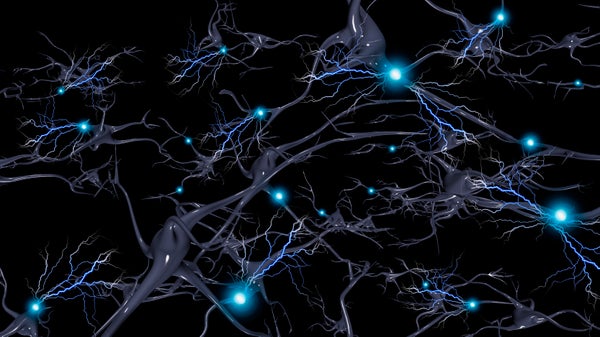Memories Are Made by Breaking DNA — and Fixing It, Study in Mice Finds
Nerve cells form long-term memories with the help of an inflammatory response
Bruce Rolff/Stocktrek Images/Getty Images
When a long-term memory forms, some brain cells experience a rush of electrical activity so strong that it snaps their DNA. Then, an inflammatory response kicks in, repairing this damage and helping to cement the memory, a study in mice shows.
The findings, published on 27 March in Nature, are “extremely exciting,” says Li-Huei Tsai, a neurobiologist at the Massachusetts Institute of Technology in Cambridge who was not involved in the work. They contribute to the picture that forming memories is a “risky business,” she says. Normally, breaks in both strands of the double helix DNA molecule are associated with diseases including cancer. But in this case, the DNA damage-and-repair cycle offers one explanation for how memories might form and last.
It also suggests a tantalizing possibility: this cycle might be faulty in people with neurodegenerative diseases such as Alzheimer’s, causing a build-up of errors in a neuron’s DNA, says study co-author Jelena Radulovic, a neuroscientist at the Albert Einstein College of Medicine in New York City.
On supporting science journalism
If you’re enjoying this article, consider supporting our award-winning journalism by subscribing. By purchasing a subscription you are helping to ensure the future of impactful stories about the discoveries and ideas shaping our world today.
Inflammatory response
This isn’t the first time that DNA damage has been associated with memory. In 2021, Tsai and her colleagues showed that double-stranded DNA breaks are widespread in the brain, and linked them with learning.
To better understand the part these DNA breaks play in memory formation, Radulovic and her colleagues trained mice to associate a small electrical shock with a new environment, so that when the animals…
Read the full article here







